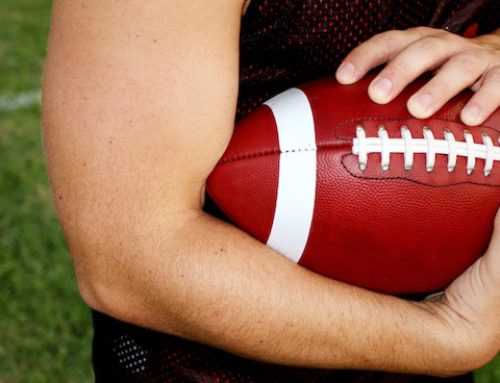How to Master the 2-1-2 Zone Defense
![]()
The 2-1-2 zone defense is popular in basketball, particularly in youth basketball. In this defense, the players set up in the shape of a X, with two players up top, one in the middle, and two on the bottom.
This defense has several advantages for a team. First, it prevents drives into the paint. Second, it inhibits low post play. Third, it is highly conducive to grabbing defensive rebounds.
RELATED: 2 Drills to Help You Play Lockdown Basketball Defense
On the other hand, coaches should be aware of the 2-1-2 zone’s disadvantages. First, it is susceptible to 3-point shots; however, this weakness also presents some opportunities (see below). Second, it is vulnerable to cross-court passes. If a team can successfully execute them, it can stretch the defense and leave gaps. Third, as with any zone defense, if players don’t carry out their responsibilities, the whole thing falls apart.
RELATED: The Keys To a Strong Basketball Defensive Stance
The diagrams below show how the 2-1-2 works. The players are identified as “1,” “2,” “3,” “4” and “5.” Once the zone is set up, Players 1 and 2 are responsible for preventing penetration and hounding perimeter shooters on their side of the court. Players 1 and 2 each cover an area from the middle post out to the 3-point line. When one player (Player 2 for example) has to go out, his counterpart (Player 1) shifts to half court and supports. Thus, 1 and 2 need to be constantly moving when the ball is above the middle post line.
RELATED: How to Successfully Run a 1-3-1 Basketball Defense
Players 3, 4 and 5 form a defensive/rebounding triangle. They prevent low-post moves and drives to the rim.
Because it is so difficult to penetrate with the ball, the 2-1-2 zone encourages long-range shots, which creates lots of opportunities for rebounds. Players 3, 4 and 5 are key for this.
Player 5 should be your tallest, most athletic player. He or she moves in a circle, in a strong defensive position, always facing the ball as it moves around the court.
Initially, when the ball comes down the court, players 3, 4 and 5 form their defensive triangle. Player 1 harasses the point guard while Player 2 moves to the middle of the free-throw line and supports. Once the ball is passed, Players 1 and 2 assume their positions and responsibilities.
The 2-1-2 is a great zone defense because it requires the other team to beat you with long-range shots and with your team’s mistakes. If players consistently carry out their responsibilities, it is very difficult to penetrate or get off open short-range shots. However, if players break down in terms of their roles, it open up gaps that the offense can exploit.
The diagrams below show the 2-1-2 zone as the ball is brought down the court.


RECOMMENDED FOR YOU
MOST POPULAR
How to Master the 2-1-2 Zone Defense
![]()
The 2-1-2 zone defense is popular in basketball, particularly in youth basketball. In this defense, the players set up in the shape of a X, with two players up top, one in the middle, and two on the bottom.
This defense has several advantages for a team. First, it prevents drives into the paint. Second, it inhibits low post play. Third, it is highly conducive to grabbing defensive rebounds.
RELATED: 2 Drills to Help You Play Lockdown Basketball Defense
On the other hand, coaches should be aware of the 2-1-2 zone’s disadvantages. First, it is susceptible to 3-point shots; however, this weakness also presents some opportunities (see below). Second, it is vulnerable to cross-court passes. If a team can successfully execute them, it can stretch the defense and leave gaps. Third, as with any zone defense, if players don’t carry out their responsibilities, the whole thing falls apart.
RELATED: The Keys To a Strong Basketball Defensive Stance
The diagrams below show how the 2-1-2 works. The players are identified as “1,” “2,” “3,” “4” and “5.” Once the zone is set up, Players 1 and 2 are responsible for preventing penetration and hounding perimeter shooters on their side of the court. Players 1 and 2 each cover an area from the middle post out to the 3-point line. When one player (Player 2 for example) has to go out, his counterpart (Player 1) shifts to half court and supports. Thus, 1 and 2 need to be constantly moving when the ball is above the middle post line.
RELATED: How to Successfully Run a 1-3-1 Basketball Defense
Players 3, 4 and 5 form a defensive/rebounding triangle. They prevent low-post moves and drives to the rim.
Because it is so difficult to penetrate with the ball, the 2-1-2 zone encourages long-range shots, which creates lots of opportunities for rebounds. Players 3, 4 and 5 are key for this.
Player 5 should be your tallest, most athletic player. He or she moves in a circle, in a strong defensive position, always facing the ball as it moves around the court.
Initially, when the ball comes down the court, players 3, 4 and 5 form their defensive triangle. Player 1 harasses the point guard while Player 2 moves to the middle of the free-throw line and supports. Once the ball is passed, Players 1 and 2 assume their positions and responsibilities.
The 2-1-2 is a great zone defense because it requires the other team to beat you with long-range shots and with your team’s mistakes. If players consistently carry out their responsibilities, it is very difficult to penetrate or get off open short-range shots. However, if players break down in terms of their roles, it open up gaps that the offense can exploit.
The diagrams below show the 2-1-2 zone as the ball is brought down the court.













